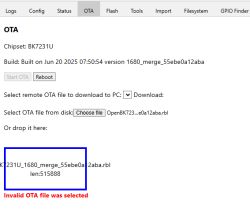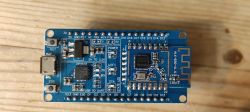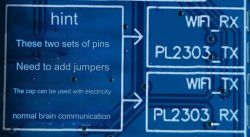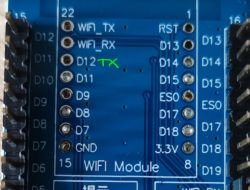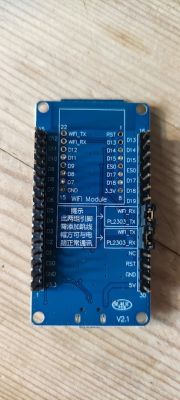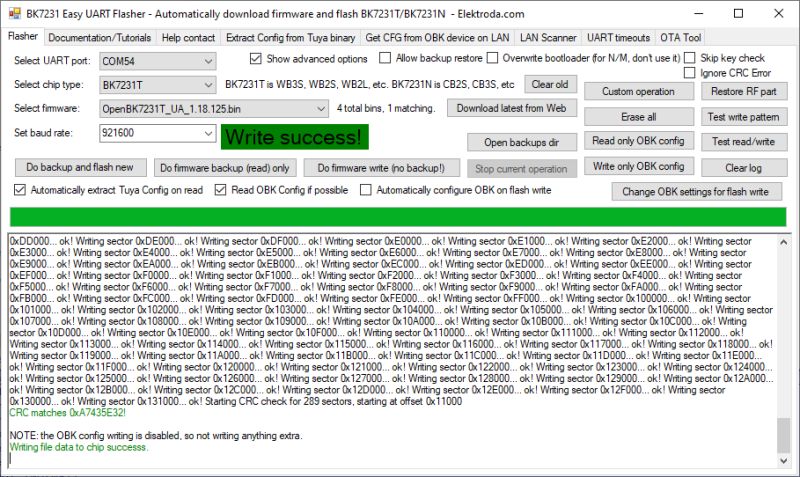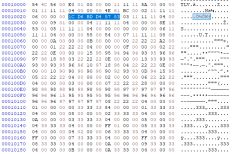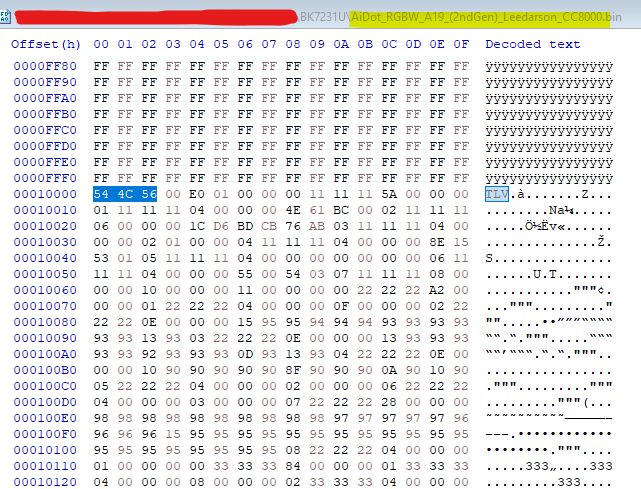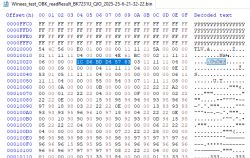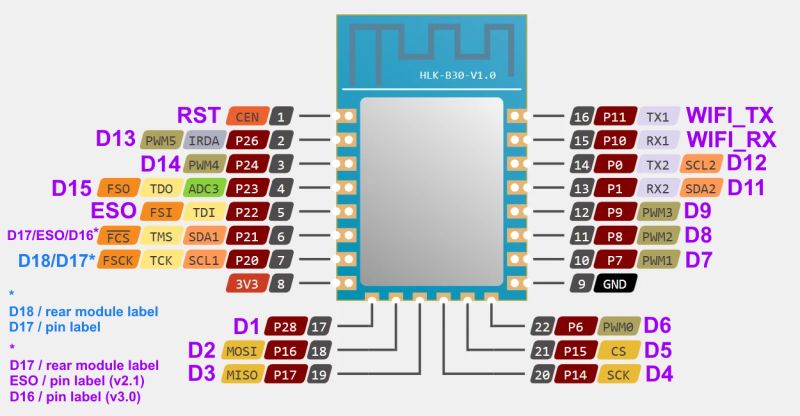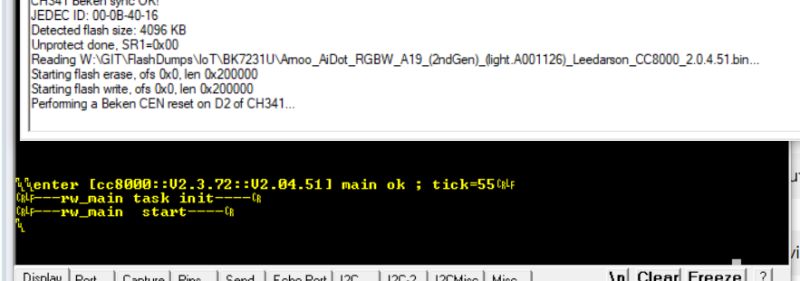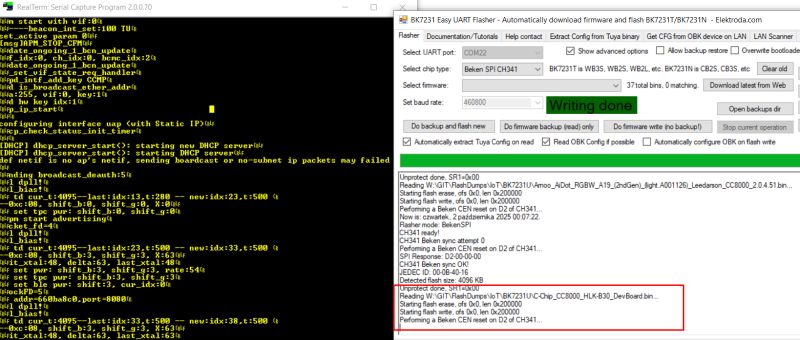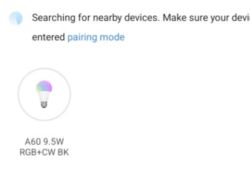There are a few posts around that reference the C-Chip CC8000/BK7231U chip and that it can be found on the Hi-Link HLK-B30 development board, but experiments with it appear mixed in with several other threads, so here's a thread dedicated to the HLK-B30 and now with OpenBK7231U.
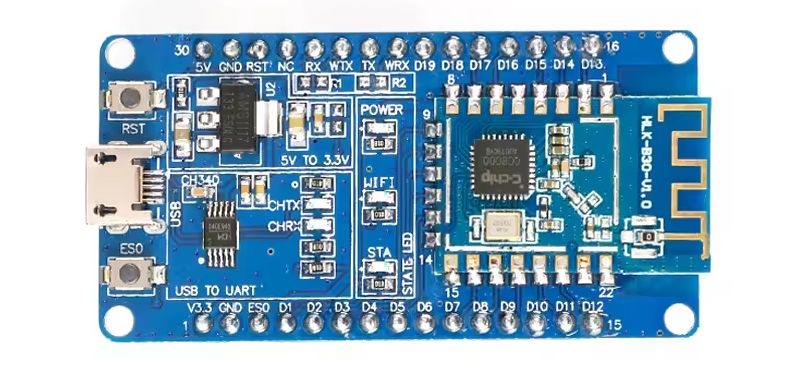
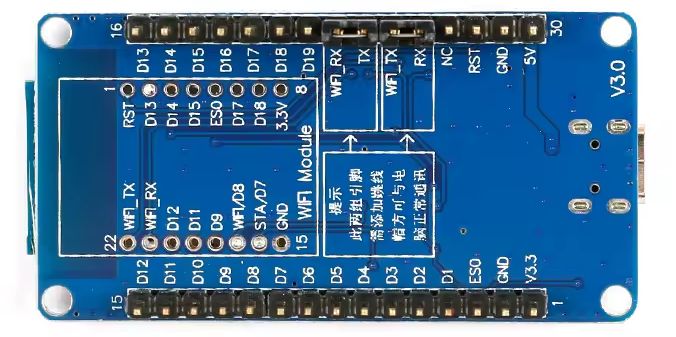
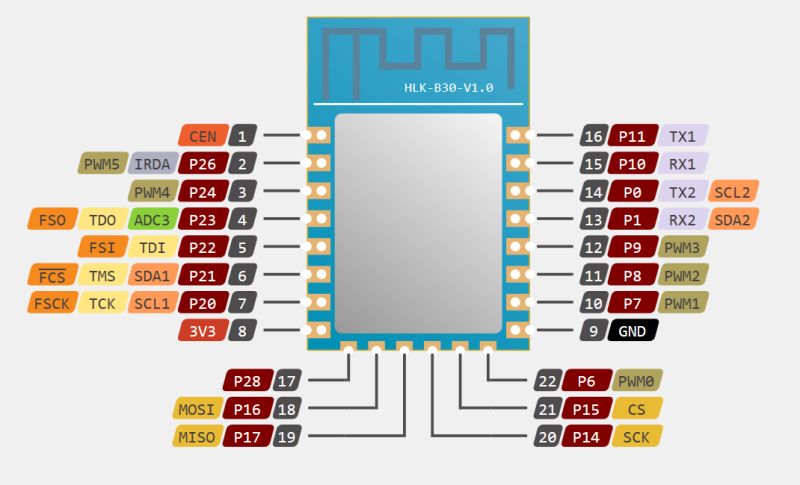
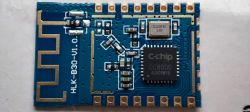
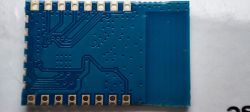
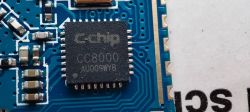
Pin mapping for SPI flashing with CH341A/Python method - needed if writing bootloader from 0x0. BK7231U is like BK7231T - no rom. Note that on v2.1 of the board D16 is incorrectly labelled as "ESO". In v3.0 (pictured above) D16 is labelled correctly.
2mb EN25QH16 flash detected in NeoProgrammer when in SPI mode
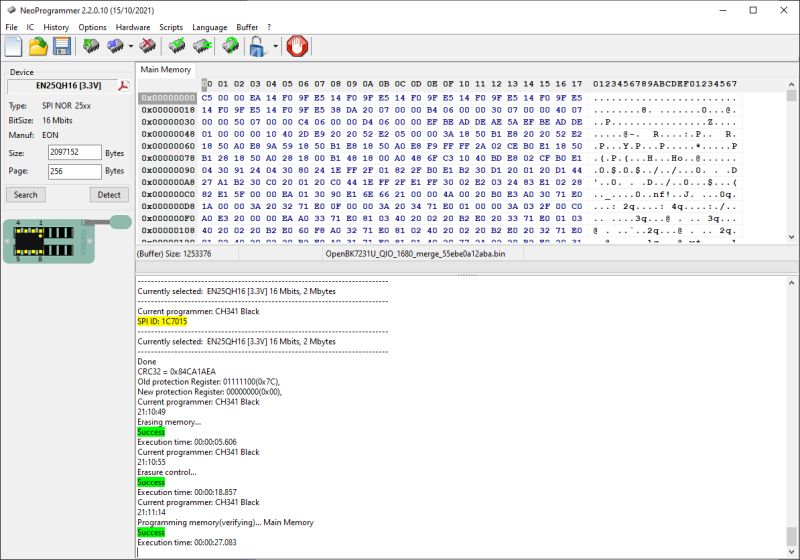
OpenBK7231U_QIO_1680_merge_55ebe0a12aba.bin from https://github.com/openshwprojects/OpenBK7231T_App/pull/1680 flashed in its entirety from 0
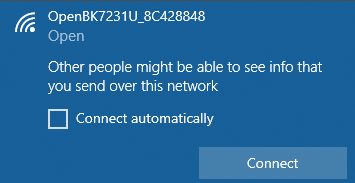
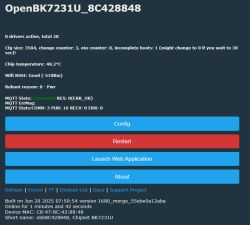
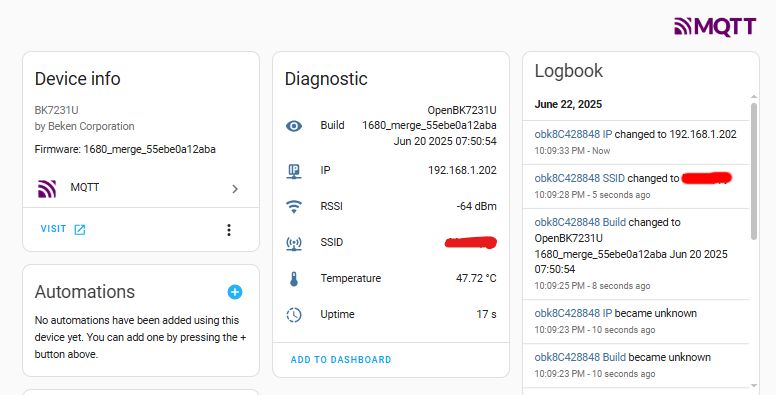






| Pin | Pin Name | Type | Descriptions | 1 | CEN | I | Chip enabled, highly effective | 2 | P26_PWM5 | I/O | P26,PWM5 | 3 | P24_PWM4 | I/O | P24,PWM4 | 4 | P23_TDO_F_S0 | I/O | P23,ADC3 | 5 | P22_TDI_F_SI | I/O | ES0, enter at command mode / restore factorysettings, please pull up if not used, same as P28 | 6 | P21_TMS_F_CS | I/O | P21 | 7 | P20_TCK_F_SC | I/O | P20 | 8 | VBAT | P | 3.3V power supply | 9 | P28 | I/O | Enter at command mode / restore factory settings, please pull up if not in use, same as P22 | 10 | P16 | I/O | P16 | 11 | P17 | I/O | P17 | 12 | P14 | I/O | P14 | 13 | P15 | I/O | P15 | 14 | P6_PWM0 | I/O | P6,PWM0 | 15 | GND | P | GND | 16 | P7_PWM1 | I/O | P7,PWM1 | 17 | P8_PWM2 | I/O | WiFi indicator light | 18 | P9_PWM3 | I/O | P9,PWM3 | 19 | P1_URAT2_RXD | I/O | P1,UART2 | 20 | P0_UART2_TXD | I/O | P0,UART2 | 21 | P10_UART1_RXD | I/O | P10,UART1, For upgrading, command settingand transparent transmission | 22 | P11_UART1_TXD | I/O | P11,UART1, For upgrading, command setting and transparent transmission |
Pin mapping for SPI flashing with CH341A/Python method - needed if writing bootloader from 0x0. BK7231U is like BK7231T - no rom. Note that on v2.1 of the board D16 is incorrectly labelled as "ESO". In v3.0 (pictured above) D16 is labelled correctly.
| HLK-B30 | CH341A | RST | D2 | D17 | SCK | ESO/D16 (between D17 and D15) | CS0 | ESO (between GND and D1) | MOSI | D15 | MISO | GND | GND |
2mb EN25QH16 flash detected in NeoProgrammer when in SPI mode

OpenBK7231U_QIO_1680_merge_55ebe0a12aba.bin from https://github.com/openshwprojects/OpenBK7231T_App/pull/1680 flashed in its entirety from 0

Code: Text









